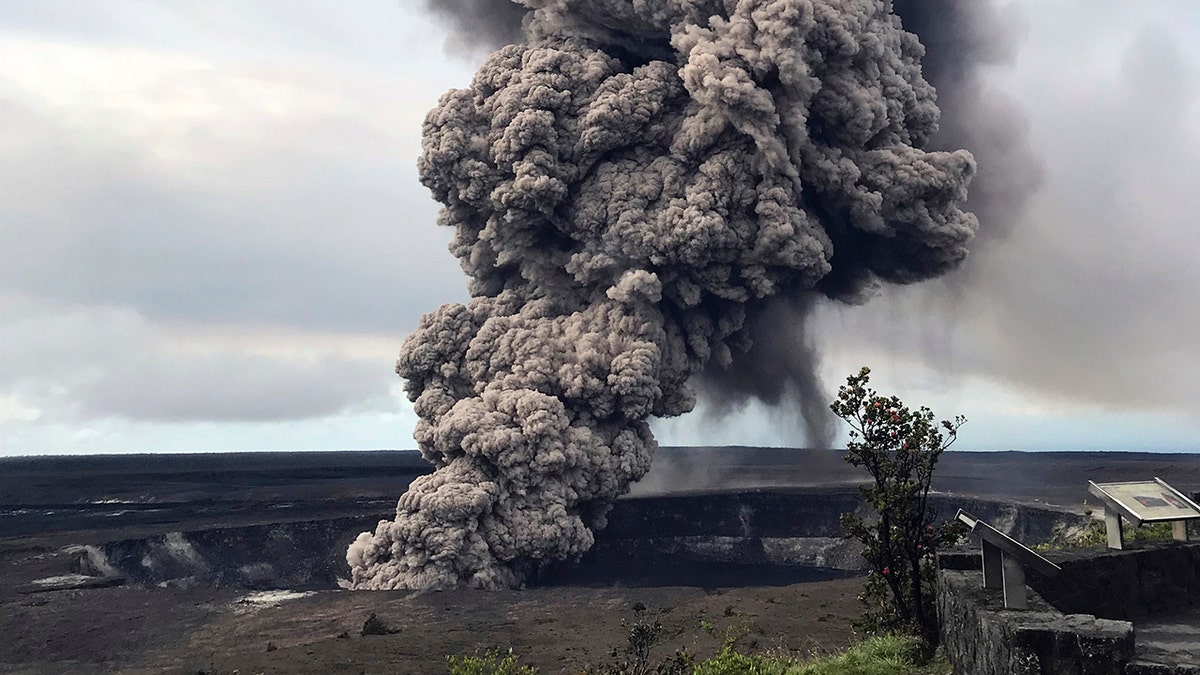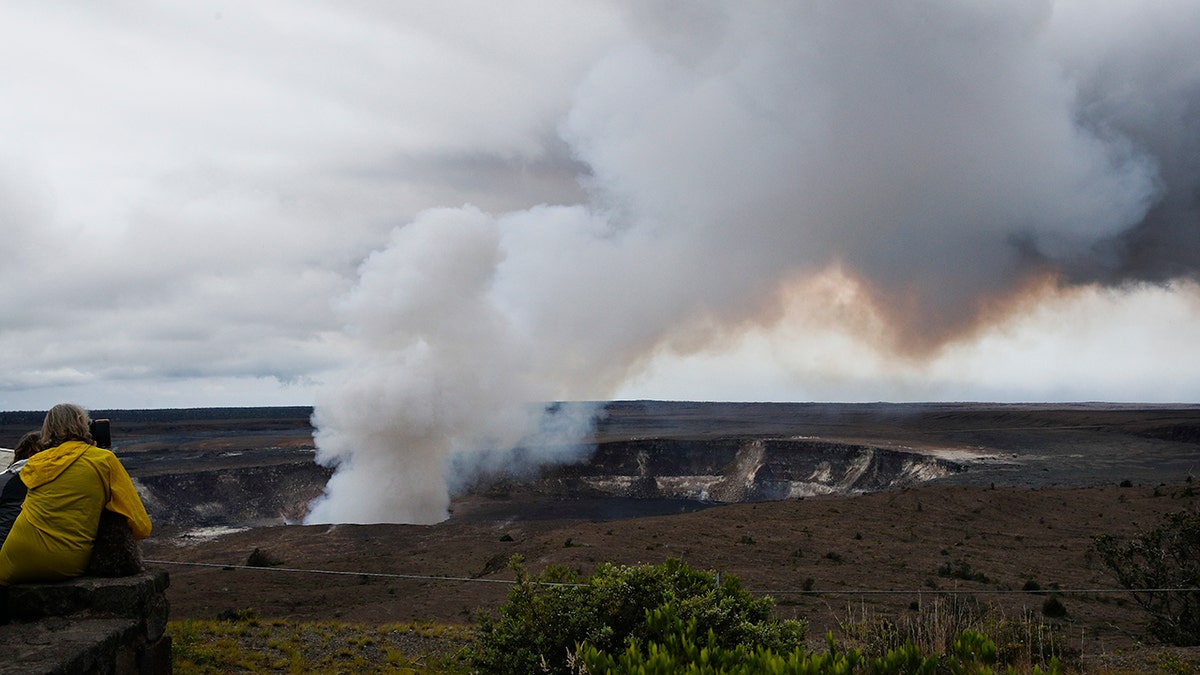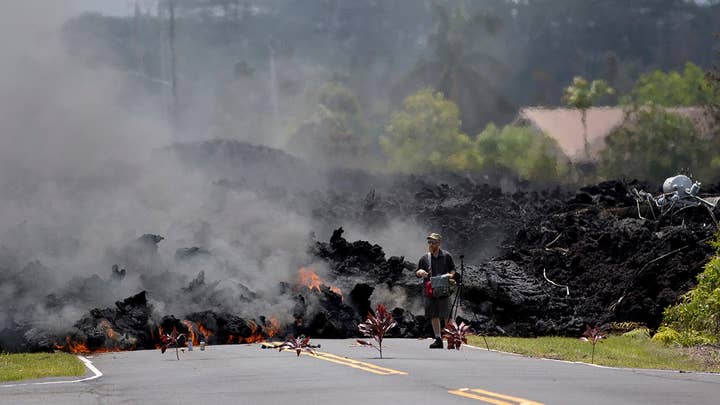
An ash column rises Wednesday from the overlook at Halema'uma'u Crater at the summit of Kilauea Volcano in Hawaii Volcanoes National Park on the island of Hawaii. (U.S. Geological Survey via AP)
Geologists warned Wednesday that Hawaii’s Kilauea volcano could soon experience explosive eruptions from its summit and launch large rocks and ash into the air.
The threat of explosive activity will rise as lava drains from the summit of Kilauea, one of the most active volcanoes in the world, and explosions will be possible in the coming weeks if the lava dips below the groundwater table, the U.S. Geological Survey (USGS) said.
If lava drops below the groundwater level, it could heat up the water and create steam. The steam could build in pressure as rocks fall and form a dam within the volcano’s walls and "cause steam-driven explosions" with "very little warning,” the Hawaiian Volcano Observatory (HVO) told the Honolulu Star-Advertiser.
The volcano could then eject "ballistic rocks" of lava up to several feet in diameter, the USGS said. It may also send pebbles shooting into the air several miles away.
"Debris expelled during such explosions could impact the area surrounding Halemaʻumaʻu and the Kīlauea summit," the HVO told the Star-Advertiser.
There could also be potential for ash and sulfur dioxide emissions. Ash can cause eye and breathing irritation, reduce visibility and interfere with electrical lines, the Los Angeles Times reported.
So far, the eruption has destroyed 36 structures since it began releasing lava from fissures that opened in a Big Island neighborhood about 25 miles east of the summit crater. A 15th vent opened Wednesday, spreading lava through Leilani Estates and neighboring Lanipuna Gardens, Hawaii officials said.
Separately, Hawaii Gov. David Ige said the Puna Geothermal Venture energy plant near the lava outbreak was accelerating its removal of about 50,000 gallons of stored pentane, a flammable gas, from the site.
It would be "very, very hazardous" if a volcanic vent were to open under the facility where the fuel is stored, the governor said. He expected it would all be removed by Thursday.
The explosive conditions resembled Kilauea’s 1924 summit eruption that killed one person and spewed rocks, ash and dust into the air for 17 days, said Tina Neal, scientist-in-charge at the USGS Hawaiian Volcanoes Observatory.

Steam and gas rise from Kilauea's summit crater in Volcanoes National Park, Hawaii on Wednesday. (Associated Press)
No one lives in the immediate area of the summit crater. But people have continued to visit Hawaii Volcanoes National Park, which includes the crater and surrounding region. The park will be evacuated before conditions worsen, officials said.
Nearly 2,000 residents have been ordered to evacuate the neighborhoods close to the vents, but some ignored the order and remained to watch over their property. Authorities went door-to-door in Lanipuna to get people out of their homes Tuesday.
The Associated Press contributed to this report.

